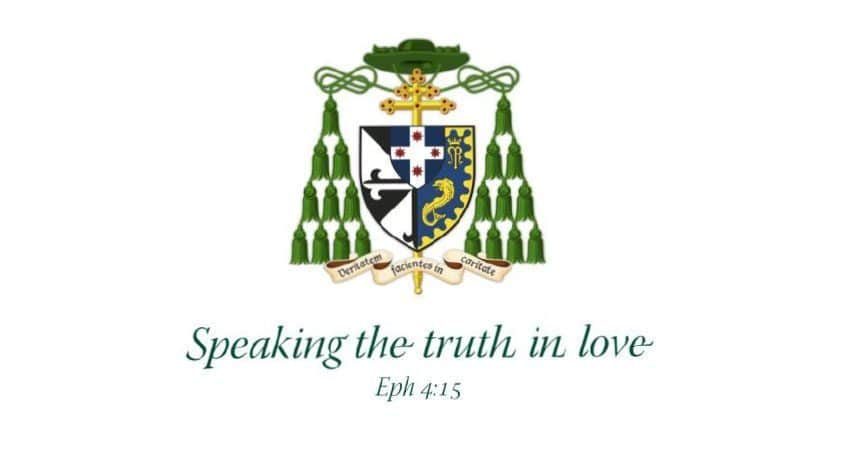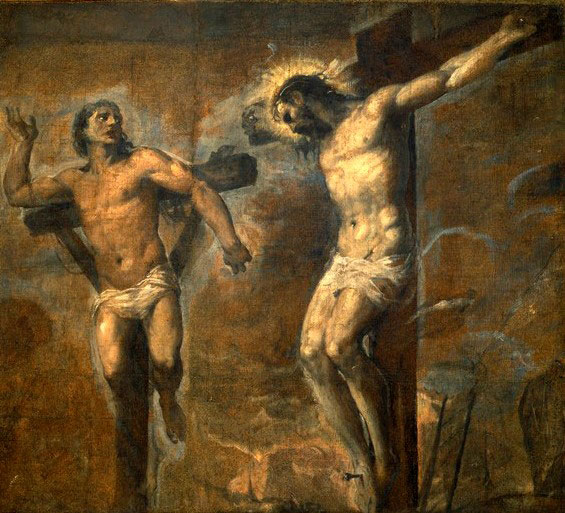HOMILY FOR MASS FOR THE SOLEMNITY OF CHRIST THE KING YEAR C + EQUESTRIAN ORDER OF THE HOLY SEPULCHRE OF JERUSALEM

ST MARY’S CATHEDRAL, SYDNEY 20 NOVEMBER 2022
The recent passing of Queen Elizabeth II was mourned by millions the world over. A model of faith expressed in public service, of calm and steadfastness in adversity, and of leadership and comfort for her people, she loved Australia and Australians reciprocated. The crowds attending or watching her funeral rites were unprecedented. Along the way they got a rare glimpse of some of the Crown Jewels, those dazzling treasures of the royal family, nation and empire, bejewelled with over 23,000 gems. They comprise the coronation regalia and more than 100 royal and liturgical items.
The symbols placed upon the Queen’s coffin—crown, orb and sceptre—were all overtly Christian ones, each with a cross on top and with more Christian symbols around it. The idea of a ceremonial orb goes back to the gods of ancient Rome and before, who were often portrayed standing on a globe, and the emperors whose regalia included a globe—which proves the ancients knew the world was round, not flat. Once the emperors became Christians they carried a globus cruciger—a bejewelled golden bowling ball with a big gem-studded cross on top—and so have Christian monarchs ever since.
The cross over the globe suggested that these earthly rulers were subject to God, and chosen and anointed to share in His kingship. It is a theme found in many civilisations and is at the core of today’s reading from Samuel. The tribes of Israel turn to David and proclaim him Messiah, the one ordained to be sovereign over God’s people (2Sam 5:1-3). He was destined to reign for forty years—a long time by the standards of those who came before our late Queen Elizabeth—and despite his many failings, David occupied a hallowed place in Israel’s memory. Much of this was due to his famous courage, military prowess, and above all, trust in God. Israel’s relationship with monarchy after David, and his wise if flawed son Solomon, was much shakier: there were far more bad monarchs than good, and bad ones usually brought calamity upon the nation. Yet rather than give up on the idea altogether, the prophets and people dreamed of ‘a second David’, a future messiah who would restore God’s people and rule peacefully over all the earth (e.g. Jer 23:5-6; 33; Ezek 34:23-24; 37:24-26; Zech 14:9).
So the baby Jesus was hailed by an archangel and three oriental potentates as “the infant King of the Jews”; His mother Mary was called “Most highly favoured… Mother of my Lord” or Queen Mother; and when the boy grew up, He was regularly celebrated as “Son of a David”, “Messiah” or “King of the Jews”.[1] The Gospels record Him speaking of the kingdom ninety times and sometimes implying He was a king himself. While He avoided being made king during most of His public life, He let the people sing God save the king as He entered Jerusalem, admitted He was a king during His trial, and the title stuck thereafter. So His disciples presented Him as the long-hoped-for universal king in their preaching, devotions, art and sacred music.
Yet in Jesus there is nothing of the military acumen of David, or the courtly splendour of Solomon, nor the grandeur of a medieval Holy Roman Emperor, or the respectability of our Saville Row suited King Charles III. Pilate half acknowledges and half mocks Jesus’ kingship. But as he hears Jesus say Himself, His kingdom is like no other (Jn 18:36). The Passion is part coronation ceremony, with the equestrian procession as He arrived in Jerusalem, the presentation to the crowds by the emperor’s representative, the soldiers draping Him in royal purple and crowning Him with thorns, and the officers reverencing him. This coronation showed the contempt some had for His kind of kingship but also their nagging suspicion He might just be the real thing.
In our Gospel today (Lk 23:35-43), we witness more of the ambiguous mockery, this time from those at the foot of the cross, where Jesus has been enthroned. The leaders, soldiers, even one of those being executed with Him all jeer at Him and His designations as “King of the Jews” and “Christ of God”. A real king’s armies would come to rescue Him; a real Messiah’s God would also…

Jesus’ interaction with the other victim reveals at last what kind of king He really is. In contrast to those who think He’s getting what He deserved, the Good Thief recognises Jesus is an innocent victim. Unlike those who expect self-serving displays of power from their kings, this man realises that Jesus is a king for others. And where the Bad Thief looked down on Jesus, the Good Thief looks up to Him for mercy and a promise of heaven. Just as Jesus’ kingship seems to have been exposed as totally bogus, we get an intimation of the Resurrection and the recovery of paradise. Now our job is to place the cross on top of this world, subjecting earthly affairs to the divine will and offering all the globe the salvation won upon the cross.
But before He can raise the man to new life in paradise, Jesus must himself enter into death and lie in the Holy Sepulchre. An Order dedicated to that holiest place on this earth, and to the other places associated with the Saviour’s life, now provides for the needs of the Latin Patriarchate of Jerusalem, and for many of the works of the Church in the Holy Land. It contributes to the support of 68 parishes, 40 primary schools, 33 secondary schools, a university and several hospitals, dispensaries and welfare centres. The late Lieutenant of Honour Dr Glen Coorey KGCHS and his wife Suzanne DGCHS recently made the largest bequest in the Order’s history in Australia. As a result of their generosity, an Australian lieutenancy will for the first time be able to fund a significant project in the Holy Land—at the shrine of the Mary Queen of Palestine. With the 23,000 members of the Order around the world we pray the prayer that was first prayed only feet away from the Holy Sepulchre of Jerusalem: Jesus, remember me, when you come into your kingdom.
[1] Mt 1:1; 3:2-3; 7:21-22; 8:2,6,8,21,25; 9:27-28; 12:23; 14:28,30; 15:22,25,27; 16:22; 17:4,15; 18:21; 20:30-33; 21:3,9,15; 22:42; 24:42; 26:22; Mk 1:3; 10:47-48; 11:9; 12:35; Lk 1:17; 2:26; 3:4; 5:8,12; 6:46; 7:6,13,19; 9:54,59,61; 10:1-2,17,39-41; 11:1,39; 12:41,42; 13:15,23,25; 17:5-6,37; 18:6,38-39,41; 19:8,31,34; 22:33,38,49,61; 24:34; Jn 1:23,49; 6:15,23,68; 9:38; 11:2-39; 12:13; 13:6-14,25,36-37; 14:5,8,22; 16:19-20; 20:2,13-28; 21:7-16,20-21.
INTRODUCTION TO MASS FOR THE SOLEMNITY OF CHRIST THE KING YEAR C + EQUESTRIAN ORDER OF THE HOLY SEPULCHRE OF JERUSALEM, ST MARY’S CATHEDRAL, SYDNEY 20 NOVEMBER 2022
Welcome to St Mary’s Cathedral Sydney for our Mass for the Solemnity of Our Lord Jesus Christ, the Universal King. This feast marks the end of the liturgical year and celebrates Christ’s lordship over all time and space as we enter a new year with the season of Advent and prepare for Christ’s coming at Christmas and at the end of days.
I greet members of the Equestrian Order of the Holy Sepulchre of Jerusalem who are joining us for Mass today. The Order is devoted to sustaining the spiritual, charitable, and cultural works of the Church in the Holy Land, as well as preserving and propagating the faith in those lands. Concelebrating with me are the Order’s chaplains: Dean Don Richardson, Rev. Dr Tom Carroll, and Frs John Knight and Paul Smithers. I’m pleased to acknowledge the Lieutenant Mr Justice Kunc, and other councillors, office-holders, members and friends of the Order. To everyone here today: a very warm welcome as we celebrate the Lord of our universe and our hearts!

